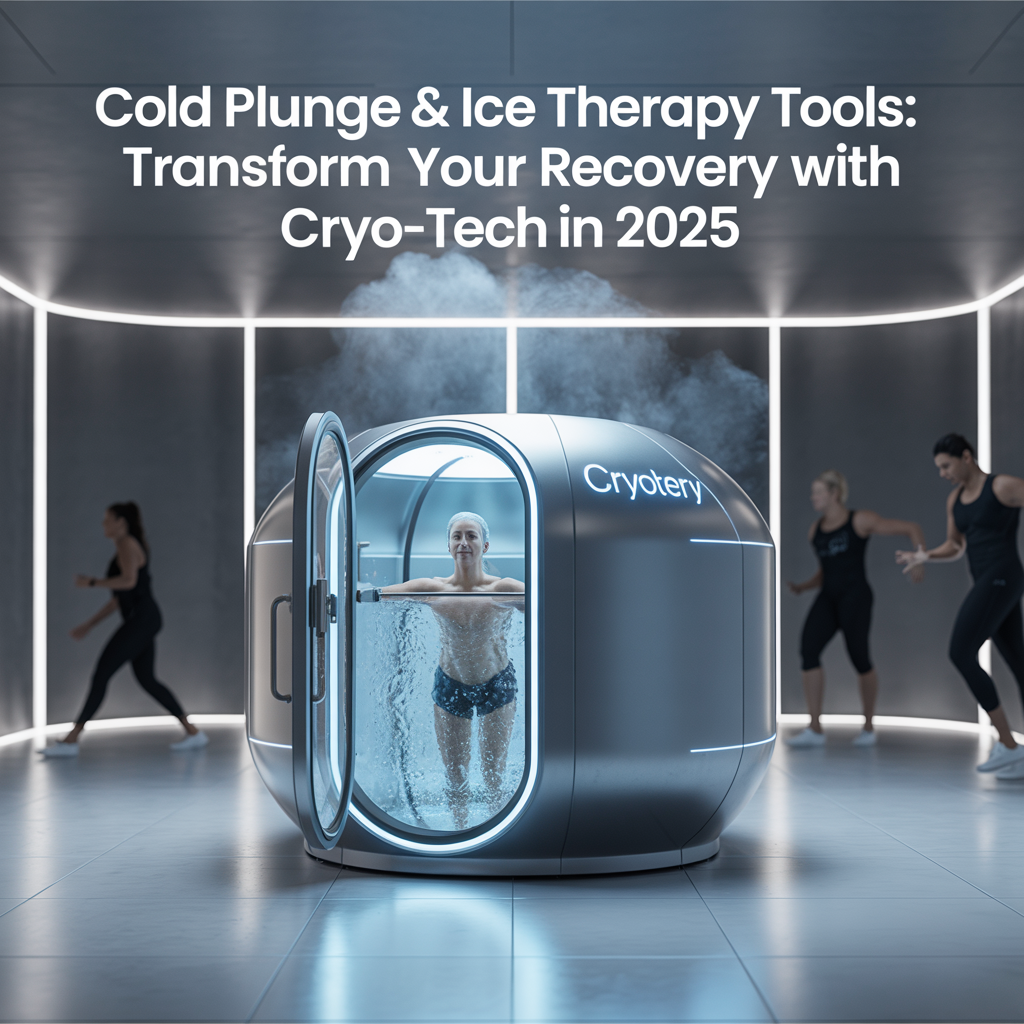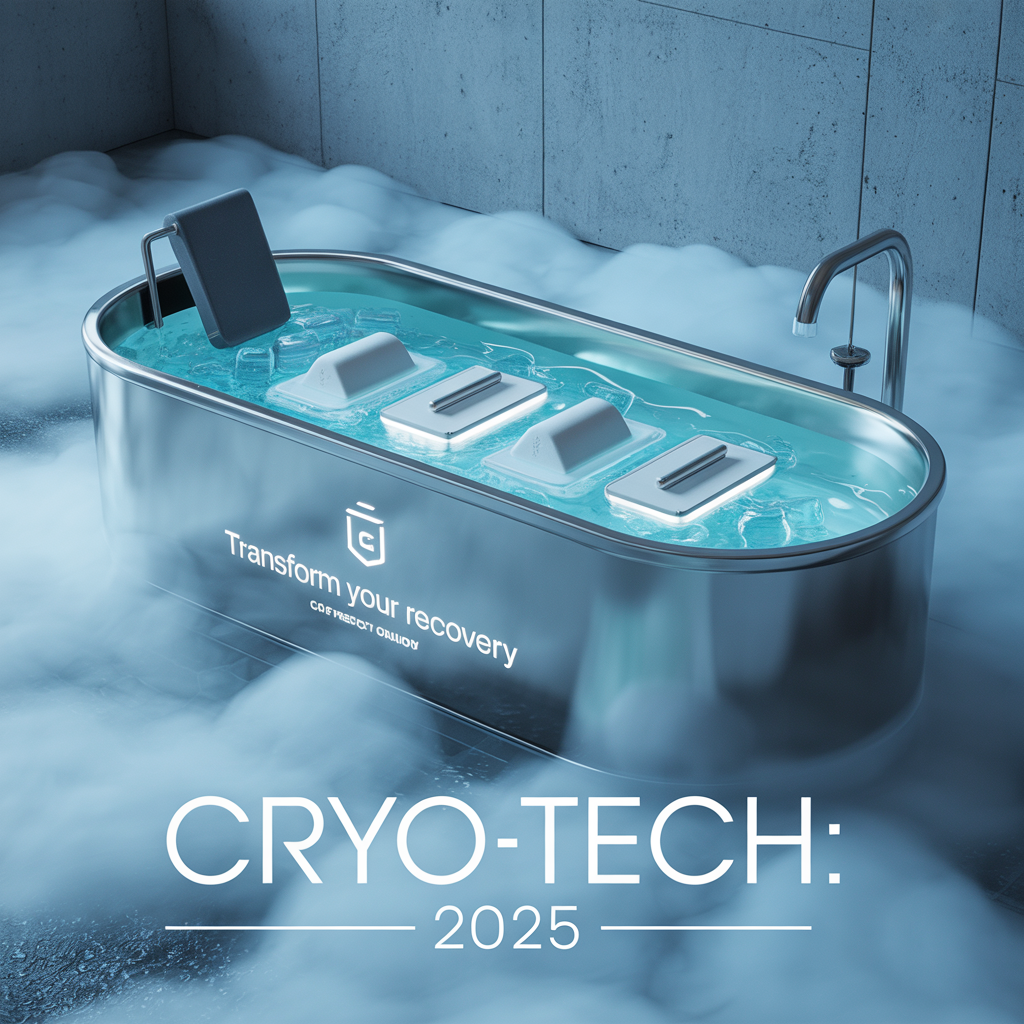
Three years ago, if you’d told me that my favorite morning ritual would involve shivering in a tub filled with icy water, I would have laughed. But a cold plunge (and a mountain of research) changed my anti-ice stance forever. Cold therapy—once dismissed as an athlete-only strategy—has surged into mainstream health and wellness, thanks to its promise of sharper minds, quicker healing, and next-level resilience. In this deep-dive, I’ll share what happened when I put the newest cold plunge tech to the test, sift through science vs. wellness folklore, and help you decide if ice is actually the ultimate biohack in your wellness toolkit.
- My Love-Hate Relationship With Cold (And Why I Finally Gave In)
- Cold Plunge vs Cryotherapy: What Actually Happens to Body & Mind?
- Ice Bath Shopping Spree: Techy Tubs, Budget Ice Bags, and Mini Cryo Chambers
- Is Cold Therapy for Everyone? Surprises, Safety, and Who Should Pump the Brakes
- Conclusion: Why Staying Frosty Might Be the Most Human Thing You Do All Year
My Love-Hate Relationship With Cold (And Why I Finally Gave In)
I’ll be honest—my relationship with cold water started with trauma. Picture this: eight-year-old me, camping with my family, confidently stepping onto what I thought was solid ground near the lake. Instead, I plunged straight into freezing water that felt like liquid ice. The shock knocked the breath out of me, and I swore off cold water forever. For years, I was the person cranking up the shower temperature and avoiding ocean swims in anything below 75 degrees.
Fast forward two decades. My friend Jake, a relentless biohacker, wouldn’t stop talking about his morning cold plunges. “Just try it once,” he’d say, sharing articles about cold plunge benefits 2025 research was revealing. He’d send me studies showing how cold exposure improves mood, energy, and resilience by triggering a cascade of physiological and mental adaptations. I resisted. Hard.
But scientific curiosity eventually won. Jake’s transformation was undeniable—sharper focus, better sleep, this almost magnetic energy. Research shows that cold therapy benefits extend far beyond what I’d imagined. So, reluctantly, I agreed to try his setup: a simple cold plunge tub in his garage.
The first session was… dramatic. I lasted maybe 30 seconds before letting out what can only be described as a primal yelp that probably woke his entire neighborhood. But something incredible happened afterward. The rush of energy was unlike anything I’d experienced. My mood lifted immediately. That afternoon, I felt more alert and focused than I had in months.
As Dr. Susanna Søberg notes,
“Cold exposure is as much a mental reset as it is a physiological one—embracing discomfort sparks growth.”
The morning after my first cold immersion recovery session, I woke up naturally—no grogginess, no hitting snooze three times. Just clean, sharp energy. Over the following weeks, I noticed my sleep improving and my afternoon energy crashes disappearing. Even my chronic shoulder tension seemed to ease.
Yes, there were more awkward yelps. My neighbors probably thought I was practicing some bizarre vocal exercise routine. But each session became easier, and the benefits more pronounced. My childhood fear of cold water was slowly transforming into something I genuinely looked forward to—a daily reset that felt both challenging and deeply rewarding.

Cold Plunge vs Cryotherapy: What Actually Happens to Body & Mind?
I used to think all cold exposure therapy was basically the same—just different ways to freeze yourself. I was completely wrong. The physiological differences between cold water immersion benefits and air-based cryotherapy are fascinating, and understanding them changed how I approach recovery.
The Vasoconstriction Dance: Why Your Skin Tingles
When I first stepped into a cold plunge at 10–15°C, that immediate skin tingling wasn’t just discomfort—it was my blood vessels rapidly constricting, then dilating. This cold shock response mechanism creates a powerful circulation boost that research shows triggers cold-shock proteins, supporting cellular resilience and potentially offering anti-aging benefits.
Cryotherapy chambers work differently. At -110°C to -140°C for just 2–3 minutes, the dry air creates an intense but brief exposure that doesn’t penetrate as deeply as water immersion.
The Norepinephrine Surge: Your Brain’s Wake-Up Call
The real magic happens in your brain. Cold exposure triggers a massive norepinephrine release—that’s your body’s natural focus and mood enhancer. Water-based cold plunges create a sustained response over 10-minute sessions, while cryo chambers deliver a quick neurochemical hit.
“Cold therapy isn’t about being tough—it’s about giving your biology a strategic wake-up call.” – Dr. Andrew Huberman
Water vs Air: The Real Differences
Cold water immersion is intense and sustained—you’re fighting the water’s thermal conductivity. Cryotherapy inflammation relief through air-based chambers feels more manageable but costs significantly more per session.
The Wim Hof Method crowd gets the accessibility factor right—anyone can fill a tub with ice. Elite athletes and Navy SEALs often prefer the consistency and convenience of professional cryo chambers. Some recovery studios even encourage clients to sing opera during sessions to manage the intensity (apparently it works).
Cost and Accessibility Reality Check
Cold plunges require initial equipment investment but offer unlimited home sessions. Cryotherapy chambers deliver precise temperatures and quick sessions but typically cost $40-80 per visit. Both effectively reduce inflammation and improve mental clarity, but your choice depends on budget, space, and session preferences.
Studies indicate that cold exposure therapy triggers thermogenesis and mitochondrial biogenesis, improving energy levels regardless of your chosen method. The key is consistency, not perfection.

Ice Bath Shopping Spree: Techy Tubs, Budget Ice Bags, and Mini Cryo Chambers
I’ll be honest—diving into the world of top cold plunge products 2025 has been like stepping into a tech wonderland where recovery meets engineering. My first test drive was the Plunge Portable Pro, and wow. The adjustable temperature control and self-cleaning filtration system made me feel like I was operating a mini spacecraft rather than just trying to freeze my muscles into submission. The precision is remarkable—no more guessing if the water’s cold enough or worrying about murky ice soup after a few sessions. But let’s talk reality. Not everyone has space for a high-tech tub, especially in my tiny NYC bathroom. Enter the SunHome Ice Tub—this inflatable genius folds down to practically nothing and drains faster than I can say “hypothermia.” For under $200, it delivers legitimate cold exposure without requiring a home renovation. Research shows that home cold plunge tools now offer pro-grade features, narrowing the gap between elite athlete setups and everyday users, and this little inflatable proves it. The real MVP in my arsenal? The Thena Cold Gel Wrap. After long runs, this thing became my secret weapon for targeted recovery. Sometimes you don’t need full-body immersion—just strategic cold where it counts most. Now, cryo compression recovery boots like the Hyperice X make me feel like a low-budget astronaut every time I strap them on. The combination of cold therapy and dynamic compression creates this weird sci-fi recovery experience that actually works for sore legs. It’s simultaneously ridiculous and effective. Which brings me to the elephant in the room: mini cryo chambers home use. The CryoSauna Pro looks impressive, but let’s have a thought experiment. If Tony Stark needed a nap, would he ditch the Iron Man suit for a personal cryo chamber? Maybe. But for most of us mortals, it’s overkill.
“Investing in recovery isn’t about luxury—it’s about giving your future self more at-bats.” – Rich Roll
Here’s my practical ranking from most to least versatile: Start with portable cold plunge tubs if you’re serious and have space. Go inflatable for apartment living. Add compression boots for targeted recovery. Save the mini cryo chamber for when you’ve conquered everything else—or when you’re ready to feel like a superhero in your own home.

Is Cold Therapy for Everyone? Surprises, Safety, and Who Should Pump the Brakes
Let me be honest—I used to think cold therapy was just another wellness fad. But after digging into the research and experiencing the benefits firsthand, I’ve changed my tune. Most healthy adults can safely enjoy cold therapy’s perks, including improved mood, faster recovery, and enhanced focus. The science backs this up, and even former skeptics like myself are seeing real results. However, cold therapy safety isn’t a one-size-fits-all situation. Research shows that while cold exposure is generally safe, it’s not risk-free for everyone.
Who Should Think Twice About Cold Therapy
If you have cardiac conditions, Raynaud’s disease, or significant cold sensitivities, you need to pump the brakes. These health risks of cold therapy aren’t just theoretical—they’re real concerns that require medical guidance. I learned this the hard way during what I’ll call my “cringe-worthy personal consult” with my doctor, who reminded me that being tough isn’t the same as being smart. People with heart conditions face particular cold therapy safety risks because the shock response can strain cardiovascular systems. Those with Raynaud’s or circulation issues may experience dangerous extremity reactions. Pregnant women should also avoid cold immersion.
What Your Doctor Wishes You’d Ask
Before your first plunge, ask your physician these key questions:
- Are there any medications that might affect my cold response?
- Given my health history, what temperature and duration limits should I follow?
- What warning signs should I watch for during and after exposure?
Mental Barriers and Creative Solutions
Here’s where things get interesting. If anxiety is your biggest obstacle, try pairing cold exposure with mindfulness techniques, calming music, or even breathing exercises. I won’t detail my experiment with laughter yoga during an ice bath—let’s just say it was memorable but not necessarily effective.
“Ultimately, cold therapy is about tuning in deeply to your body’s limits and language.” – Dr. Rhonda Patrick
The bottom line: Cold therapy offers genuine benefits for most people, but listening to your body isn’t weakness—it’s wisdom. Start conservatively, consult professionals when needed, and remember that gradual progression beats reckless bravado every time.
Conclusion: Why Staying Frosty Might Be the Most Human Thing You Do All Year
Here’s what I’ve learned after diving deep into the world of cold therapy recovery: we’re not just chasing a wellness trend. We’re reconnecting with something fundamentally human. By embracing discomfort, we awaken old biological pathways that have been dormant for generations, spark genuine resilience, and yes—sometimes gain those coveted bragging rights at the gym.
The beauty of modern recovery tech is how it puts these ancient rituals directly in your hands. At the touch of a button, whether you’re a pro athlete fine-tuning performance or a desk-bound dreamer seeking better cold therapy mental clarity, these tools make what once seemed impossible suddenly accessible. Research shows that modern cold therapy tech makes ancient health strategies accessible and effective for everyone willing to try.
I was wrong about ice being just frozen water that makes you miserable. It’s actually a gateway to cellular resilience cold plunge experiences that can reshape how your body and mind respond to stress. The cold-shock proteins triggered during exposure don’t just help with recovery—they enhance cellular resilience and may even have anti-aging effects.
“In 2025, cold isn’t just a trend—it’s a reminder that resilience comes from facing what we’d rather avoid.” – Me (because sometimes you need your own quote)
Cold-induced thermogenesis promotes mitochondrial biogenesis, which translates to improved energy levels and metabolic rate. But beyond the science, there’s something profoundly grounding about voluntarily stepping into discomfort and coming out stronger.
So here’s my challenge to you: Try one cold plunge—just one. See what shifts, physically or mentally. You may just surprise yourself. Whether it’s a high-tech cryo chamber or a simple ice bath in your backyard, the magic isn’t in the equipment. It’s in your willingness to face what your comfortable mind would rather avoid.
The water’s cold, but the potential for transformation is red hot. Your move.
TL;DR: Cold plunging isn’t just hype—it’s a fusion of ancient wisdom and modern science. Whether you’re aiming for better recovery, calm, or clarity, the right cold therapy tech could be your game changer in 2025. Explore, experiment, and stay frosty.


